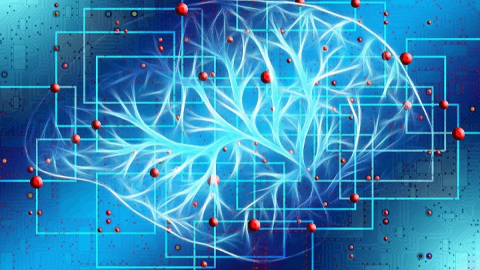预约演示
更新于:2025-05-07
GluK2
更新于:2025-05-07
基本信息
别名 EAA4、Excitatory amino acid receptor 4、GluK2 + [8] |
简介 Ionotropic glutamate receptor that functions as a cation permeable ligand-gated ion channel, gated by L-glutamate and the glutamatergic agonist kainic acid. L-glutamate acts as an excitatory neurotransmitter at many synapses in the central nervous system. Binding of the excitatory neurotransmitter L-glutamate induces a conformation change, leading to the opening of the cation channel, and thereby converts the chemical signal to an electrical impulse. The receptor then desensitizes rapidly and enters a transient inactive state, characterized by the presence of bound agonist (PubMed:14511640, PubMed:28180184, PubMed:34375587, PubMed:7536611, PubMed:8730589). Modulates cell surface expression of NETO2. In association with GRIK3, involved in presynaptic facilitation of glutamate release at hippocampal mossy fiber synapses (By similarity).
Independent of its ionotropic glutamate receptor activity, acts as a thermoreceptor conferring sensitivity to cold temperatures (PubMed:31474366). Functions in dorsal root ganglion neurons (By similarity). |
关联
2
项与 GluK2 相关的药物作用机制 GluK2调节剂 [+2] |
在研机构 |
非在研适应症- |
最高研发阶段临床1/2期 |
首次获批国家/地区- |
首次获批日期1800-01-20 |
作用机制 GluK2 agonists [+1] |
非在研适应症 |
最高研发阶段临床前 |
首次获批国家/地区- |
首次获批日期1800-01-20 |
1
项与 GluK2 相关的临床试验NCT06063850
A Multi-center, Phase 1/2a, First-in-human (FIH) Study Investigating the Safety, Tolerability, and Efficacy of AMT-260 in Adults with Unilateral Refractory Mesial Temporal Lobe Epilepsy (MTLE) Administered Via Magnetic Resonance Imaging (MRI)-Guided Convection-enhanced Delivery (CED)
This is a study of AMT-260 in Adults with Unilateral Refractory Mesial Temporal Lobe Epilepsy (MTLE). It is designed to investigate the Safety, Tolerability, and Efficacy of AMT-260 in Adults with MTLE Administered via Magnetic Resonance Imaging (MRI)-guided Convection-enhanced Delivery (CED).
开始日期2024-06-12 |
申办/合作机构 |
100 项与 GluK2 相关的临床结果
登录后查看更多信息
100 项与 GluK2 相关的转化医学
登录后查看更多信息
0 项与 GluK2 相关的专利(医药)
登录后查看更多信息
720
项与 GluK2 相关的文献(医药)2025-06-01·Comparative Biochemistry and Physiology Part D: Genomics and Proteomics
De novo transcriptomic analysis to identify candidate genes potentially related to host recognition during infective stage of Caligus fugu (Crustacea: Copepoda)
Article
作者: Tasumi, Satoshi ; Ueno, Daisuke ; Sato, Yoshiki ; Kondo, Yusuke ; Kotani, Tomonari ; Sonoda, Takanori ; Rana, K M Shakil ; Ohtsuka, Susumu
2025-04-03·Brain
α2δ-2 regulates synaptic GluK1 kainate receptors in Purkinje cells and motor coordination
Article
作者: Jin, Daozhong ; Shao, Jian-Ying ; Huang, Yuying ; Chen, Shao-Rui ; Zhou, Jing-Jing ; Pan, Hui-Lin ; Zhou, Meng-Hua ; Chen, Hong
2025-04-01·Neuropathology and Applied Neurobiology
Glial Alterations in the Glutamatergic and GABAergic Signalling Pathways in a Mouse Model of Lafora Disease, a Severe Form of Progressive Myoclonus Epilepsy
Article
作者: Campos‐Rodríguez, Ángela ; Rubio, Teresa ; Sanz, Pascual ; Viana, Rosa
16
项与 GluK2 相关的新闻(医药)2024-12-20
·生物谷
酒渣鼻是一种慢性皮肤病,可能导致痤疮样丘疹、血管破裂、皮肤增厚和面部潮红。
在一项新的研究中,来自匹兹堡大学的研究人员发现一种名为SYM2081的化合物抑制了小鼠模型和人类皮肤样本中驱动炎症的肥大细胞,为预防由肥大细胞驱动的瘙痒、荨麻疹和其他皮肤病症状的新型局部治疗铺平了道路。这一结果表明,一种治疗酒渣鼻(rosacea)和其他炎症性皮肤病的新方法可能即将出现。
相关研究结果发表在2024年12月11日的Science Translational Medicine期刊上,论文标题为“Agonism of the glutamate receptor GluK2 suppresses dermal mast cell activation and cutaneous inflammation”。
论文通讯作者、匹兹堡大学皮肤病学与免疫学教授Daniel Kaplan博士说,“我对这项研究的临床可能性感到非常兴奋。目前,没有很多靶向肥大细胞的好疗法,所以我们认为我们的方法可能对许多皮肤病有巨大的好处,包括酒渣鼻、湿疹、荨麻疹和肥大细胞增多症。”
肥大细胞充满了微小的包裹或颗粒,每个包裹或颗粒都充满了组胺和其他化合物,这些化合物充当炎症途径的信号或激活剂。
当肥大细胞被激活时,这些包裹会打开,释放出引发一系列免疫反应的化合物。这种称为脱颗粒(degranulation)的过程对于抵御蜂毒、蛇咬伤和致病菌等威胁至关重要,但肥大细胞的错误激活也会引发过敏反应,包括肿胀、荨麻疹、瘙痒,在严重的情况下还会引发过敏性休克。
在之前的一篇论文(Cell, 2021, doi:10.1016/j.cell.2021.03.002)中,Kaplan和他的团队发现,皮肤中的神经元会释放一种名为谷氨酸的神经递质,抑制肥大细胞。当他们剔除这些神经元或抑制识别谷氨酸的受体时,肥大细胞变得过度活跃,导致更多的炎症。
Kaplan说,“这一发现让我们想知道,采取相反的做法是否会产生有益的效果。如果我们激活谷氨酸受体,也许我们可以抑制肥大细胞的活动和炎症。”
激活GluK2在体内抑制小鼠和人肥大细胞脱颗粒,但不影响肥大细胞数量
为了验证这一假设,论文第一作者、清华大学医学生张友兰(作为Kaplan实验室的访问学者进行了这项研究)和匹兹堡大学皮肤病学系的研究助理教授Tina Sumpter博士研究了一种名为SYM2081或4-甲基谷氨酸(4-methylglutamate)的化合物,该化合物激活了一种几乎只存在于肥大细胞表面上的谷氨酸受体GluK2。
果然,他们发现SYM2081有效地抑制了小鼠和人类皮肤样本中肥大细胞的脱颗粒和增殖。当小鼠在出现酒渣鼻或湿疹样症状之前涂抹含有SYM2081的局部乳膏时,皮肤炎症和其他疾病症状要轻得多。
根据Kaplan的说法,这些发现表明,用含有GluK2激活化合物的日霜抑制肥大细胞可能是预防酒渣鼻和其他炎症性皮肤病的一种有前景的方法。
酒渣鼻是一种慢性皮肤病,可能导致痤疮样丘疹、血管破裂、皮肤增厚和面部潮红。Kaplan说,“尽管有针对不同类型酒渣鼻的优秀疗法,但许多都是基于抗生素的,它们只针对一些症状。目前还没有治疗潮红的好方法,因此这是一个尚未满足的重大需求。我们的研究表明,通过激活GluK2抑制肥大细胞可以减少与酒渣鼻相关的潮红。”
鉴于作者展示了对他们方法的概念证明,他们希望设计出新的GluK2激活化合物,以便最终可以在临床试验中进行测试。此外,通过匹兹堡大学创新创业办公室创新研究所,他们还申请了使用SYM2081抑制肥大细胞功能的专利。(生物谷 Bioon.com)
参考资料:
Youran Zhang et al. Agonism of the glutamate receptor GluK2 suppresses dermal mast cell activation and cutaneous inflammation. Science Translational Medicine, 2024, doi:10.1126/scitranslmed.adq9133.
细胞疗法临床1期临床结果
2024-12-12
THURSDAY, Dec. 12, 2024 -- It's still early science -- studies in mice and in human cells -- but researchers are on the trail of an effective new treatment for inflammatory skin conditions such as
rosacea
.
Skin cells called mast cells are key players in the inflammation and itchiness that can plague folks with these skin ailments.
However, researchers at the University of Pittsburgh report they've spotted a compound called SYM2081 that can quiet down these overactive cells.
“I’m really excited about the clinical possibilities of this research,” said senior study author
Dr. Daniel Kaplan
, a professor of dermatology and immunology at the university. “Currently, there aren’t a lot of good therapies that target mast cells, so we think that our approach could potentially have huge benefits in many skin conditions, including rosacea, eczema, urticaria [hives] and mastocytosis [a rare genetic disorder that causes the body to produce too many mast cells].”
His team published its findings Dec. 11 in the journal
Science Translational Medicine
.
Anyone with hay fever or other allergies has heard of histamines; cellular compounds that can trigger or signal the misery of inflammation.
According to Kaplan's team, mast cells contain "granules" loaded with histamines (and other pro-inflammatory agents). When these granules tear open, that can trigger a cascade of inflammatory immune responses such as those seen in rosacea or eczema.
Granule rupture is beneficial when the threat to the skin is real and a quick immune response is needed -- a bee sting, for example.
However, out-of-control granule rupture and histamine activity is at the root of allergic reactions like swelling, hives and itchiness, the researchers explained.
Kaplan's team had already discovered that mast cells can recognize a compound called glutamate, which appears to keep the cells from going into overdrive.
When they "switched off" the mast cell receptor that was targeted to glutamate, mast cells became hyperactive.
“This finding led us to wonder if doing the opposite would have a beneficial effect,” Kaplan said in a university news release. “If we activate the glutamate receptor [Gluk2], maybe we can suppress mast cell activity and inflammation.”
The newly discovered compound, SYM2081, appears to do just that.
In experiments conducted in mice and in human cells, SYM2081 activated the glutamate receptor on mast cells, quieting things down.
For example, mice prone to rosacea- or eczema-like symptoms had much milder outbreaks of the disease if they had been treated with a cream containing SYM2081, Kaplan's team found.
Rosacea is a common skin malady characterized by a thickening of the skin, pimples, broken blood vessels and facial redness.
Could treating rosacea with an SYM2081-bearing cream ease inflammation, itchiness and swelling in people, as well? That remains to be seen, the team said.
“Although there are excellent therapies available for different types of rosacea, many are antibiotic-based and they only target some of the symptoms,” Kaplan noted. “There are no good therapies for [rosacea-linked] flushing, so this is a significant unmet need. Our study suggests that suppressing mast cells by activating GluK2 could reduce the flushing associated with rosacea.”
The new study was funded by the U.S. National Institutes of Health. Kaplan's team has already applied for a patent for the potential new therapy, and clinical trials in patients are planned.
Whatever your topic of interest,
subscribe to our newsletters
to get the best of Drugs.com in your inbox.
2024-11-25
Nov. 21, 2024 -- uniQure N.V. (NASDAQ: QURE), a leading gene therapy company advancing transformative therapies for patients with severe medical needs, today announced that the first patient has been dosed in the GenTLE Phase I/IIa clinical trial of AMT-260 for the treatment of refractory mesial temporal lobe epilepsy (MTLE).
“The dosing of the first patient in our Phase I/II trial in temporal lobe epilepsy represents an important milestone for uniQure and our third clinical trial initiation over the past six months,” stated Walid Abi-Saab, M.D., chief medical officer of uniQure. “Nearly one-third of people experiencing focal onset seizures do not respond to currently available treatments and are left with limited therapeutic options. Our investigational agent, AMT-260, which is a one-time administration, has the potential to be a transformative treatment option for these patients. We continue to actively screen patients for the trial and look forward to providing program updates in the new year.”
AMT-260 consists of an AAV9 vector that locally delivers two engineered miRNAs designed to reduce the expression of GluK2 protein subunits, a subtype of glutamate receptor that is believed to be aberrantly expressed in the hippocampus of patients with refractory MTLE and believed to trigger their seizure activity. In preclinical animal studies, AMT-260 reduced the number of seizures per day in a dose-dependent manner. AMT-260 also reduced the expression of GluK2 mRNA and protein in the hippocampus of epileptic mice and from resected hippocampal slices from patients with refractory MTLE.
GenTLE is a Phase I/IIa multi-center, open-label trial being conducted in the U.S. to evaluate the safety, tolerability and exploratory signs of efficacy of two doses of AMT-260 in individuals with refractory MTLE. The study comprises two dose cohorts of six patients each. The study is actively recruiting though 10 sites with an additional two sites expected to be activated by the end of 2024. Additional details are available on www.clinicaltrials.gov (NCT06063850).
Temporal lobe epilepsy is a chronic neurologic disorder and is the most common form of focal epilepsy with more than 600,000 individuals suffering from the disorder in the United States. Approximately 80% of all temporal lobe epilepsy cases are mesial, which involves the medial (or internal) structures of the brain. The majority of MTLE cases are refractory to anti-seizure medications, which severely limits treatment options.
uniQure’s mission is to reimagine the future of medicine by delivering innovative cures that transform lives. The recent approvals of our gene therapy for hemophilia B – a historic achievement based on more than a decade of research and clinical development – represent a major milestone in the field of genomic medicine and ushers in a new treatment approach for patients living with hemophilia. We are now leveraging our modular and validated technology and manufacturing platform to advance a pipeline of proprietary gene therapies for the treatment of patients with Huntington's disease, refractory mesial temporal lobe epilepsy, amyotrophic lateral sclerosis (ALS), Fabry disease, and other severe diseases. www.uniQure.com
The content above comes from the network. if any infringement, please contact us to modify.

基因疗法临床研究
分析
对领域进行一次全面的分析。
登录
或

Eureka LS:
全新生物医药AI Agent 覆盖科研全链路,让突破性发现快人一步
立即开始免费试用!
智慧芽新药情报库是智慧芽专为生命科学人士构建的基于AI的创新药情报平台,助您全方位提升您的研发与决策效率。
立即开始数据试用!
智慧芽新药库数据也通过智慧芽数据服务平台,以API或者数据包形式对外开放,助您更加充分利用智慧芽新药情报信息。
生物序列数据库
生物药研发创新
免费使用
化学结构数据库
小分子化药研发创新
免费使用


